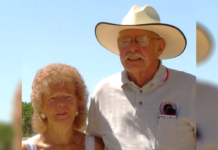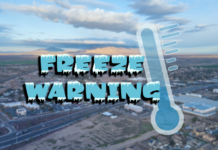By Al Brandenburg
Everyone who lives in southern Arizona knows our soils can be difficult for producing healthy plants for the average home gardener. The challenge is hard soil and alkalinity.
Desert gardening demands the balancing of the environment, and desert soils are high in clay, calcium and sodium. They are extremely hard and impermeable to water. Before doing anything, you must open and balance your soil. If not, you waste water and nutrients (either already in your soil or from fertilizers).
There are three primary types of soil, determined by the amount of clay, silt or sand particles present.
- Clay soil contains a high percentage of clay and silt. The particles are small and cling together, holding water and nutrients well. However, clay soil is susceptible to compaction, which can make it difficult for the moisture and nutrients to reach plant roots and for roots to penetrate the soil. You can identify clay soil by its sticky, slippery feel and its tendency to cling to garden tools.
- Sandy soil is composed of larger, coarser particles. It drains quickly, but it isn’t effective at holding moisture and nutrients. This type of soil feels rough and doesn’t hold together well.
- Loam, however, has a good balance of clay, silt, sand and organic material. It’s the best type of soil for gardening, providing drainage and retention of moisture and nutrients. Loam holds its shape when you squeeze it lightly and is easier to dig than other types.
The soil in your landscape likely will not be ideal initially, but soil amendments can help you improve it, allowing your plants to thrive.
So, what are some of the fixes?
Sphagnum peat moss absorbs water, slowly releasing it for use by plant roots. It lightens clay soil, providing aeration, and adds mass to sandy soil, helping prevent the leaching of nutrients.
Humus consists of decayed organic matter. It improves fertility and aeration and helps soil hold moisture.
Composted manure is an odorless farm byproduct. In addition to improving aeration and moisture retention, it enriches the soil. Dehydrated manure is a similar product that contains less moisture.
Garden topsoil is a commercially produced compost usually partially decomposed. Because of its rough texture, you use topsoil in the yard or mixed with other products, but not as a potting soil.
Organic soil amendments: Many gardeners choose to make their own soil amendment by composting dead leaves, coffee grounds and other organic materials (not weeds) to add to their existing soil.
If you have questions that aren’t covered here, call the local Master Gardener problem office at 520-374-6263 Monday through Friday from 9 a.m. until noon. You can also e-mail [email protected].
This column appears in the January issue of InMaricopa.

















![Shred-A-Thon to take place tomorrow An image of shredded paper. [Pixabay]](https://www.inmaricopa.com/wp-content/uploads/2024/03/shredded-paper-168650_1280-100x70.jpg)
